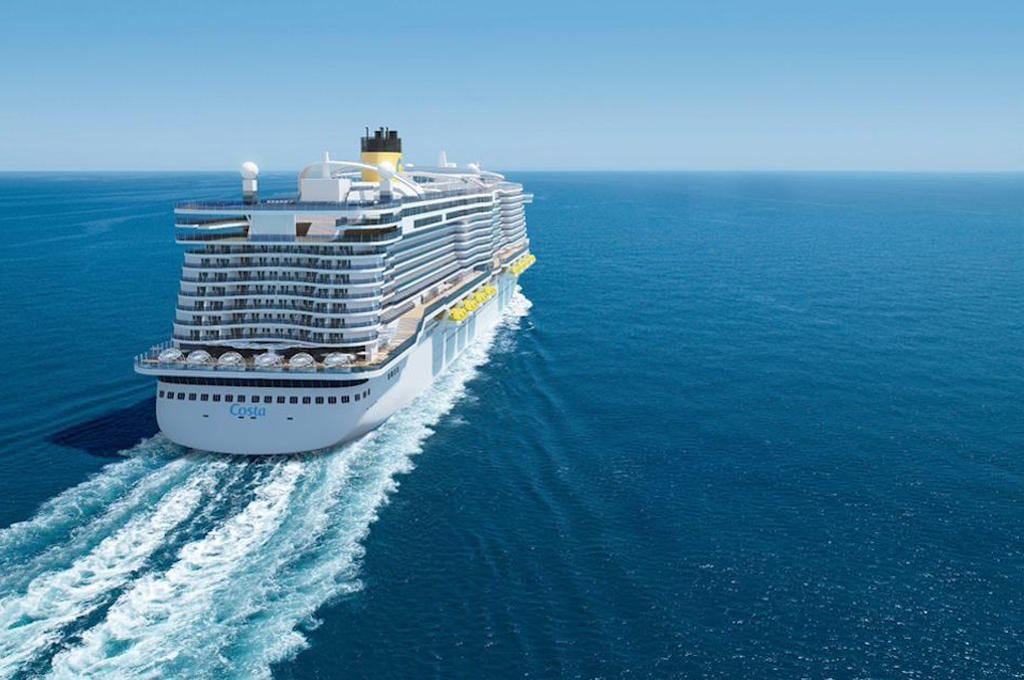Skift Take
It looks like Carnival Corp. has found a ship type it likes. Including the order announced Tuesday, the cruise company is adding seven 5,200-passenger megaships that are powered by liquefied natural gas across four brands.
The world’s largest cruise ship company is going big with its latest batch of ship orders.
Carnival Corp. announced on Tuesday that it had signed agreements with shipyards in Germany and Finland for three 180,000-ton vessels that are scheduled to arrive between 2020 and 2022.
The ships, which will be able to hold approximately 5,200 passengers at double occupancy, will be the largest yet for the brands that will sail them: Carnival Cruise Line, which is getting two, and P&O Cruises UK, which will add one. A spokesman said Carnival won’t disclose the cost of the new vessels, which are being built by Meyer Werft and Meyer Turku.
All of the vessels will be fully powered by liquefied natural gas, a cleaner fuel than cruise ships burn now. Carnival is emphasizing the use of “the world’s cleanest burning fossil fuel” as it works to meet sustainability goals.
“We are proud to be at the forefront of introducing LNG-powered ships to the cruise industry, working with our partners to achieve shipbuilding breakthroughs like this that will help us produce the most efficient and sustainable ships we have ever built,” Arnold Donald, CEO of Carnival Corp., said in a statement. “This is also an important step in our fleet enhancement plan that enables us to execute on our long-term strategy of measured capacity growth over time, while delivering innovative new ships that further elevate our already great guest experience.”
The ships announced Tuesday belong to the same class as four previous ships that were ordered last year by the parent company, which made news because Carnival said they would be able to hold a record 6,600 passengers with every berth filled.
The first of those ships will start sailing for Aida Cruises and Costa Cruises in 2019. Vessels that had been scheduled to come online for those brands in 2020 will move to 2021.
The cruise company has not said where the newest vessels will be deployed, though Carnival Cruise Line caters to North Americans and P&O is a British brand.
Paul Ludlow, senior vice president at P&O Cruises, said in a statement that the number of British passengers taking a cruise in the last five years had increased significantly. The line’s newest ship, Britannia, launched last year and the new vessel is due in 2020.
“P&O Cruises is uniquely experienced in designing ships to meet the specific needs and aspirations of British passengers and the agreement…to build a new ship of this size reflects all that our guests and prospective cruisers have been telling us and shows our confidence in the growth of the UK market,” he said.
For Carnival Cruise Line, the two new ships will bring the operator a little closer to rival Royal Caribbean International in terms of passenger count. Royal Caribbean’s largest ship, Harmony of the Seas, can hold 5,479 passengers at double occupancy.
Carnival’s largest vessel thus far is Carnival Vista, which launched earlier this year with room for 3,934 passengers. It will be joined in 2018 by sister ship Carnival Horizon. The two 5,200-passenger ships announced Tuesday are scheduled to be delivered in 2020 and 2022.
“This new ship order signifies an extraordinarily exciting future for Carnival Cruise Line and the opportunities that lie ahead to introduce a variety of magnificent new features and innovations to further enhance our outstanding guest experience,” Christine Duffy, president of Carnival Cruise Line, said in a statement.
The Daily Newsletter
Our daily coverage of the global travel industry. Written by editors and analysts from across Skift’s brands.
Have a confidential tip for Skift? Get in touch
Photo credit: A ship on order for Costa Cruises is shown in this rendering. Parent company Carnival Corp. on Tuesday announced it was ordering three more vessels in the same class. Carnival Corp.
